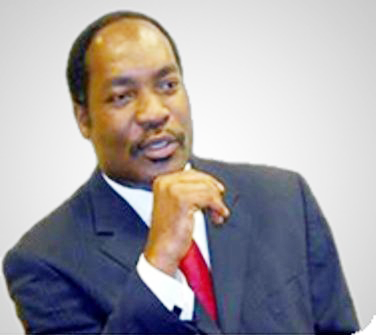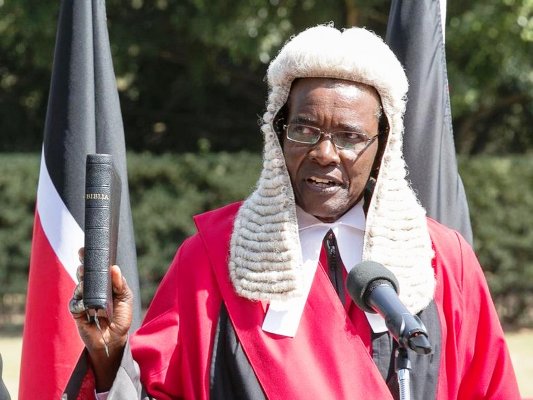Standard Chartered Bank Group recently made changes in its top management. Herman Kasekende, the pioneer Ugandan to head Standard Charted Bank Uganda (commonly referred to as StanChart) in 100 years was moved to Standard Chartered Bank Zambia as CEO and Managing Director, ending his four and half year tenure at the helm of Uganda’s second largest bank by assets. Kasekende inherited Laming Manjang.
Albert Saltson, a Ghanaian national, who has been the CEO at Standard Chartered Bank Zambia was named Standard Bank Uganda CEO and Managing Director, replacing Kasekende.
Saltson has been part of the Standard Chartered Bank Group for the last 25 years, and possibly understands better the operations of the Group. However, Saltson faces a daunting task in turning around the bank that is currently underperforming, thanks to the huge Non-Performing Loans (NPLs) left behind by his predecessor Kasekende-mainly as a result of the sluggish economy that has seen the bank’s big borrower’s default on their loans.
StanChart had the highest NPLs in 2015 in Uganda, recording Shs113.9bn, down from Shs119.5bn in 2014. This state of affairs saw the bank’s net profit fall by 75.2% to Shs28.3bn in 2015, down from Shs114.49bn in 2014.
The bank that had exchanged the number one spot with Stanbic as Uganda’s most profitable banks was relegated to the 7th position! The bank has also been trying to cut down on expenses by closing commercially non-viable branches. For example, the Mbale branch which was closed on June27, 2015.
Prior to his transfer, Kasekende and his team concentrated on recovering the bank’s money (cleaning the bank loan book), a move that has seen the bank reduce on its loans advanced to customers.
StanChart is now cautious so much that a borrower will celebrate after acquiring a loan. According to sources, the bank’s profitability might improve, but this doesn’t mean business transactions have increased-but rather the bank has concentrated on recovering NPLs, something that might affect the bank in the long run as well as the economy for credit to the private sector has reduced.
The bank’s loans and advances to customers dropped by 9% to Shs1.3tn in 2015, down from Shs1.4tn recorded in the previous year. Customers’ deposits also slightly reduced to Shs1.83tn, down from Shs1.84tn recorded in 2014.
It should be noted that StanChart gave out huge loans to companies including but not limited to Steel Rolling Mills Ltd and Pioneer Easy Bus. However, these companies have found it extremely difficult to pay back the loans as the collapsing economy bites harder.
For example, on January 23, 2014 and December 29, 2014, StanChart offered Steel Rolling Mills, a company under Alam Group that is largely owned by Abid Alam, two amalgamated loan facilities amounting to about Shs18bn and US$10m (33.6bn) respectively. The loans in question were to finance the purchase of machinery and equipment for the Sponge Iron Plant to be fixed into the company’s factory. The two loan facilities were to subsist for the periods of up to 96 months so as to enable Steel Rolling Mills generate funds from the operation of the factory in order to repay the money.
And as way of paying back the loan, Steel Rolling Mills on May 26, 2015 and June 30, 2015 made part payment to the bank of over Shs2bn and over US$7 million. However, StanChart issued a notice recalling the entire outstanding loan in the amount of over Shs18bn and over US$10 million claiming that the debenture is immediately enforced in total contravention of the Mortgaged Act.
Consequently, StanChart wanted to close the company and sell its assets, but instead court allowed the steel manufacturing firm to be put under receivership. However, the bank is yet to recover the money yet. For Pioneer, the city transport system coupled with politics saw the huge investment in buses backfire. At some point, the buses were stopped and parked at Namboole over failure to pay taxes to Uganda Revenue Authority (URA). In fact, while some buses are back on the road, many others are still parked and rotting away.
It is worth noting that StanChart is one of Uganda’s systemically important banks. A systemically important bank is one whose failure might trigger a financial crisis. They are colloquially referred to as “too big to fail”. From the above background, Saltson has a huge task of bringing back the bank to its former glory; making it one of the top most profitable banks in Uganda notwithstanding reducing the bank’s huge NPLs. I
t is also important to note that the Bank of Uganda, the regulator of the banking sector, will keep a close eye on StanChart following the collapse of Crane Bank that also had huge NPLs-2nd after StanChart. Crane Bank was one of the three Systemic banks in Uganda, but after its NPLs increased by 122.9% in 2015 to Shs142.3bn, up from Shs19.36bn in 2014, the bank’s troubles started. This saw the bank make a loss of Shs3.1bn in 2015, down from a net profit of Shs50.6bn in 2014.
All of a sudden, on October20, 2016, BoU took it over, arguing that it had become ‘Significantly undercapitalized’ and on January 27, 2017, BoU announced that dfcu had acquired the now defunct Crane Bank. Will Saltson reduce NPLs, grow business and make StanChart once again more profitable? Let’s wait and see the measures he will employ to turnaround the bank, but he should also pray hard that Uganda’s seemingly falling economy picks up during his tenure.





